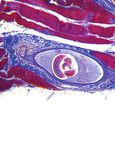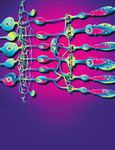Equestrian Injury Presentations to a Regional Trauma Centre in Ireland
←
→
Page content transcription
If your browser does not render page correctly, please read the page content below
Hindawi Emergency Medicine International Volume 2018, Article ID 7394390, 5 pages https://doi.org/10.1155/2018/7394390 Research Article Equestrian Injury Presentations to a Regional Trauma Centre in Ireland A. Abdulkarim ,1,2 A. Juhdi ,3 P. Coffey,1 and Lily Edelson4 1 Department of Trauma and Orthopaedic Surgery, Midland Regional Hospital, Tullamore, Ireland 2 Royal College of Surgeons, Dublin, Ireland 3 Department of Orthopedic Surgery, Our Lady’s Hospital, Navan, Ireland 4 University of limerick, Limerick, Ireland Correspondence should be addressed to A. Abdulkarim; aliameir@gmail.com Received 7 December 2017; Accepted 20 March 2018; Published 3 June 2018 Academic Editor: Robert Derlet Copyright © 2018 A. Abdulkarim et al. This is an open access article distributed under the Creative Commons Attribution License, which permits unrestricted use, distribution, and reproduction in any medium, provided the original work is properly cited. Background. The Irish Equestrian industry provides over 12,500 full time job equivalents contributing in excess of €454 million to the Irish economy annually. For such an important industry there is a paucity of information relating to equestrian injuries. Aims. The aim of this study was to determine the demographics, characteristics, and outcomes of equestrian related injuries presenting to the emergency department of a regional trauma centre in Ireland over the course of one year. Methods. Retrospective analysis of all 30,700 presentations to the emergency department (ED) of the Midland Regional Hospital (MRH) Tullamore in 2013 was performed to identify equestrian related presentations. Patient demographics, mechanism of injury, radiology results, management, and follow-up data were collected and analysed using Microsoft Excel software. Results. A total of 149 equestrian related presentations were identified during the study period. There were significantly more females involved in equestrian injuries than males (58% versus 42%). Falling from a horse contributed to significantly more presentations and admissions than any other cause. 36% of presentations were associated with a radiological abnormality. Types of injuries identified included skeletal fractures (27.5%), joint dislocation/subluxation (5%), concussion (12.5%), and splenic laceration/intraperitoneal haemorrhage (1%). Admission or transfer to tertiary care was required for 18% of equestrian injuries. Only 43% of presentations were discharged back to primary care from the emergency department. Conclusion. This study identifies a high incidence of morbidities associated with equestrian presentations. In addition we recognised populations at risk of specific injuries and described high-risk mechanisms of injury. 1. Introduction sports and recreational activities. It is estimated that 1.33% of the Irish population are regularly involved with sports The equestrian industry is an important source of employ- horses [2]. The combination of a horse’s strength, height, and ment in Ireland. It contributes an estimated €454 million unpredictability can lead to significant injuries to those who to the Irish economy [1]. The industry is believed to pro- engage in equestrian related activities. Equestrian activities vide 12,512 full time job equivalents [1]. Economically, the were responsible for over 40% of sports related spinal injuries breeding sector is the largest, followed by the competi- admitted to the Irish National Spinal Injuries Unit over a tion and recreational sectors, respectively [1]. The Midland ten-year period [3]. One study looking at professional jump region of Ireland’s share of the national sports horse herd is racing did find a lower rate of injury in the Irish professional increasing, with an estimated 8,500 horses [2]. The Midland race industry compared to that in the UK [4]. A review of the Regional Hospital (MRH) Tullamore caters for the Kilbeggan literature revealed that there is a paucity of research inves- racecourse as well as many equestrian businesses offering tigating equestrian related emergency department presenta- recreational services. tions in Ireland, particularly in relation to recreational riders. The role of the horse in Irish society has changed dra- This study was designed to assess equestrian related injury matically in the last century, with its primary use now being presentations to emergency departments. It is a retrospective
2 Emergency Medicine International study examining the mechanisms, nature, and outcomes of Table 1: Demographics, type of injury, and outcome of equestrian equestrian injuries presenting to the MRH Tullamore, Co. related presentations. Offaly. There were a total of 30,700 attendances to the MRH Number (%) emergency department for 2013. ED presentations 149 2. Methods Sex Female 87 (58) The MRH Tullamore is the trauma referral centre for the Male 62 (42) midlands region of Ireland with a population of 282,410 [5]. Age Every presentation to the Emergency Department at MRH 0–18 51 (34) from the 1st of January 2013 to the 31st of December 2013 18–65 97 (65) was assessed retrospectively to determine if an injury had >65 1 (1) been sustained in an environment related to the equestrian Outcome industry. Triage notes of all 30,700 presentations to the department were reviewed to determine if a presentation Discharge 64 (43) may be equestrian related and further chart analysis was Admission 24 (16) used for confirmation. Patient demographics, date of occur- Out patients dept. 58 (39) rence, mechanism of injury, radiology reports, management, Transfer 3 (2) and follow-up data were collected and analysed. Radiology Injuriesa 189 reports were available for all imaging and the imaging was Injury type reported by consultant radiologists. Statistical analyses were Soft tissue 80 (42) performed using Microsoft Excel. Fracture 52 (27.5) Dislocation 9 (5) 3. Results Head injury 24 (12.5) Polytrauma 24 (12.5b ) The Emergency Department at MRH Tullamore received a More than one injury per patient possible; b % of ED presentations. a total of 30,700 presentations between 1 January and 31 December 2013. One hundred and forty-nine equestrian related presentations were identified. From these presen- tations, 189 injuries were identified. No mortalities were remainder were discharged after 24 hours of neurological identified. Females accounted for more presentations than observations. One individual had a fracture of his maxilla and males (58% versus 42%) (Table 1). The median and mean age floor of orbit. No intracranial pathology was identified. were 25 and 27, respectively (range 5 to 77). Eighty-two per Seventy-seven per cent (77%) of admissions had a frac- cent (82%) of those injured were recreational horse riders. ture. Five patients required surgical intervention. One frac- The most common mechanism of injury was a fall from tured femur and two ankle fractures required open reduction horseback, contributing to almost 80% of all presentations and internal fixation. Percutaneous fixation was required for (Table 2). Other important mechanisms included kicks, a fractured ulna and radius. A wound washout was required trampling, and bites. Soft tissue injuries were the most for an open digital fracture. Six patients were admitted with common type of injury (42%), followed by fractures (27.5%), spinal fractures, 3 had stable fractures at the thoracolumbar head injuries (12.5%), and joint dislocation/subluxation (5%) junction, and 2 had stable upper thoracic spine fractures. One (Tables 1 and 2). The upper limb was the most common patient had an unstable lower cervical spine fracture with site of injury identified. The distribution and associated neurological deficits, requiring transfer to the Irish National mechanism of injuries are shown in (Table 2). Of the Spinal Injuries Unit for acute spinal stabilisation. total equestrian related presentations, 36% had radiological There were three injuries requiring admission that were abnormalities. The radiological abnormalities included upper not related to a fall from a horse. One individual was limb fractures (32%), clavicular fractures (19%), lower limb admitted after a bite injury resulting in a nipple amputation. fractures (15.5%), spinal fractures (12.5%), dislocations (11%), Two admissions were secondary to kicks from a horse, one and pelvic fractures (4%). requiring neurological observations for a head injury and the Both Tables 3 and 4 demonstrate the difference in injuries other requiring ICU admission under the general surgical distribution and outcomes between recreational and profes- team for conservative management of a splenic laceration. sional riders. Following presentation to the emergency department, 4. Discussion 43% were discharged back to primary care, 39% were referred to the outpatients department, 16% required admission, This study has revealed equestrian related presentations carry and 2% were transferred to tertiary care (Table 1). 80% a high risk of injury, with associated morbidity, requiring of admissions were secondary to falls from a horse. Head the utilization of significant hospital resources. Equestrian injuries accounted for 12.5% of admission. All had a Glasgow injuries accounted for 0.49% of presentations to the emer- Coma Scale of 15 on arrival in the emergency department. gency department in the study period. Previous studies One-third of patients with head injuries had imaging; the have shown that horse riding is as hazardous, if not more
Emergency Medicine International 3 Table 2: Mechanism of injury and distribution. Upper limb Lower limb Pectoral girdle Trunk Spine Head Total mechanism (%) Fall 44 15 19 19 23 12 132 (79) Kick 9 2 5 8 0 11 35 (19) Trample 0 9 0 0 1 0 10 (5) Bite 2 0 0 1 0 1 4 (2) Horseback 5 3 0 0 0 0 8 (4) Total distribution (%) 60 (32) 29 (15.5) 24 (12.5) 28 (15) 24 (12.5) 24 (12.5) = number of injuries out of 189 total injuries. Table 3: Injury distribution between recreational and professional This may indicate that their experience and training enables riders. them to limit injury when accidents occur, a concept that is Recreational riders Professional rider supported by the literature [13–15]. Injury distribution in this study was similar to that Fracture 44 8 reported in studies from other jurisdictions [11, 12, 15–17]. Soft Soft tissue injury 70 10 tissue injuries in isolation were the predominant injury type Dislocation 7 2 identified with upper limb and pectoral girdle the anatomical Head injury 18 6 regions in which those presenting to the emergency depart- Polytrauma 20 4 ment were most likely to be injured. Fractures comprised only 27.5% of injuries; however 77% of those that required Total 159 30 admission to hospital had suffered a fracture. Head injuries made up 12.5% of injuries (and were present in 22% of Table 4: Comparison in outcome of presentation between recre- admission) which was double the rate reported in the only ational and professional riders. comparable study identified in the literature [18]. The study by Khan et al. [18], looking at demographics of horse riding Recreational riders Professional riders injuries in southeastern Ireland, was undertaken 10 years Discharge 54 10 prior to this study and the difference in head injury rates Admission 13 11 may reflect either changes in practice amongst riders or more Out patients dept. 50 8 likely a greater awareness and diagnosis of mild traumatic Transfer 3 0 brain injuries such as concussion. Consistent with the literature, falls are the prevailing Total 120 29 mechanism of injury in equestrian presentations [10–12, 16]. While falls are inevitable to some degree in equestrian activities, they account for the highest morbidity in the sport. hazardous, as other sports including soccer, rugby, skiing, and We found that falls from a horse also were responsible for the motorcycle riding per hour of participation [6, 7]. Figures most significant injuries, highest number of admissions, and from the US consumer products safety commission for the surgical interventions. year 2014 showed that injuries from horse riding were only Suggestions to potentially reduce the incidence and mor- 28,670 injuries which is much less when compared to other bidity of equestrian related injury can be focused specifically sport like cycling with 346,208 injuries, American football on the rider, on protective equipment, and on prevention of with 237,392 injuries, soccer with 141,929 injuries, and boxing secondary injury. In the case of riders, research has shown and martial arts with 52,217 injuries [8]. On the other hand that less experienced riders are at greater risk of injury [12, equestrian riding is considered to have amongst the highest 14, 15] with a substantial decline in injury achieved after mortality rates of all sports with an annual death rate of 1 per approximately 100 hours of experience [14]. Specific training 1 million populations [9]. should be provided on how to manage a fall, including In agreement with other authors our results showed that releasing ones feet from the stirrups, positioning to limit those involved in equestrian related injuries in this study injury when hitting the ground, and how to roll away to were most commonly female, recreational horse riders, akin avoid being potentially kicked from the horse after a fall. to their international counterparts [3, 10–13]. Recreational Many of the kick injuries recorded in this study were after riders were more likely to have sustained a fracture than pro- a fall from a horse. Protective equipment such as helmets fessional jockeys, in addition to this they were more likely to and body protectors are mandatory in many competitive require surgical intervention; however admission rates were and professional equestrian activities in Ireland [19, 20] but comparable between recreational riders and professional their use is not as strictly enforced in recreational equestrian jockeys. Given the pedigree of horses involved in professional activities. Despite being shown to reduce the frequency sport, it could be expected that professional jockeys would be and severity of head injuries, studies in other jurisdictions more likely to be involved in accidents which involve greater have shown a consistently low rate of helmet use with less velocities and forces than those involving recreational riders. than 40% of riders wearing a helmet at the time of injury
4 Emergency Medicine International [6]. A weakness of this study is that the use of protective Drawbacks of our study include its retrospective nature and equipment by those attending with equestrian injuries was the lack of data on the use of protective equipment. not recorded, an area of particular paucity of data specific to Ireland. Equestrian events were responsible for over 40% 5. Conclusion of sports related attendances to the Irish National Spinal Unit [3] and given the relatively high frequency of spinal The equestrian industry, despite its recreational benefit, injuries basic medical training for riders and trainers should employment, and economic contributions, is not without be encouraged in order to reduce the risk of secondary injury hazard. This study should help serve to develop safety aware- from inappropriate mobilisation after injury. ness and promote public health strategies having identified For clinicians, the potential forces involved and the broad specific populations at risk, as well as characterising injuries nature of injuries identified in this study should give rise and mechanisms. Specific areas for future research have also to a high index of suspicion for injury when dealing with been identified. equestrian related presentations to the emergency depart- ment. In our study 16% of presentations involved multiple injuries, which introduces the risk of more subtle injuries Disclosure being overlooked because of a more obvious or distracting An earlier version of this work was presented as an abstract at injury. As a result, it is imperative that patients suffering 16th European Congress of Trauma and Emergency Surgery an equestrian related injury receive a thorough physical 2015. inspection, as per advanced trauma life support (ATLS) guidelines. In Ireland, the contribution of the horse sport industry to Conflicts of Interest the Irish economy is more than €816 million per annum. The competition sector accounted for €168 million expenditure The authors declare that they have no conflicts of interest. in the sport horse sector while a total of €103 million was spent within the affiliated leisure sector [1]. Giving the above References figures, injuries with horse riding represent a significant cost and that could be partly related to the cost of medical care [1] A. G. Fahey, A. Corbally, and K. Quinn-Brady, Horse Sport associated with diagnosis and treatment of these injuries and Ireland, Ireland, 2012. partly due to time off participation from events and loss of [2] K. Quinn and K. Hennessy, Profile of the Irish Sport Horse income to the professional riders. Industry, Irish Horse Board, Ireland, 2007. According to Turner et al., Jockeys are paid a fixed fee [3] S. Boran, B. Lenehan, J. Street, D. McCormack, and A. Poynton, for every ride and a fixed percentage of any prize money “A 10-year review of sports-related spinal injuries,” Irish Journal achieved for winning the race or being placed (around 8% of Medical Science, vol. 180, no. 4, pp. 859–863, 2011. of the prize money). In 2005, the riding fee was m85.79 per [4] M. Turner, P. McCrory, and W. Halley, “Injuries in professional ride on the flat and m117.15 for every jump ride. The ability horse racing in Great Britain and the Republic of Ireland during 1992-2000,” British Journal of Sports Medicine, vol. 36, no. 6, pp. and popularity of a jockey determine how many rides they 403–409, 2002. are offered and the top jockeys may have up to 1000 rides in 12 months. The average jockey would expect to be booked for [5] Central Statistics Office, Population of Midland Regional Authority, Central Statistics Office, Ireland, 2011. around 300 rides/year (flat) or 200 rides/year (jump), which is equivalent to an annual income in of m25,737 (flat) or m23,430 [6] C.-M. Ikinger, J. B. Jana, and A. Spiller, “Factors influencing the safety behavior of german equestrians: Attitudes towards (jump). Turner et al. reported in their paper that the majority protective equipment and peer behaviors,” Animals, vol. 6, no. of horse related injuries they studied were minor and one- 2, article no. 06, 2016. third of jockeys returned to racing within 2 weeks and 45% of [7] C. G. Ball, J. E. Ball, A. W. Kirkpatrick, and R. H. Mulloy, the injuries resulted in payouts of m1000 [21]. “Equestrian injuries: incidence, injury patterns, and risk factors Curry et al. studied The number and types of costs asso- for 10 years of major traumatic injuries,” The American Journal ciated with compensation claims for nonfatal horse riding of Surgery, vol. 193, no. 5, pp. 636–640, 2007. injuries and their figures demonstrated that the mean cost [8] “US consumer products safety commission figures of injury by of a claim was 43,374 Australian dollars (AUD) in flat racing type of sport,” https://www.cpsc.gov/. and AUD 52,589 in jumps racing. Also the claim incidence [9] D. J. Pounder, “The grave yawns for the horseman. Equestrian and median cost of a claim increased, with age. On average, deaths in South Australia 1973-1983,” Medical Journal of Aus- jockeys were absent from work for 9 weeks following a tralia, vol. 141, no. 10, pp. 632–635, 1984. substantive injury [22]. Although it is not possible to compare [10] J. A. Craven, “Paediatric and adolescent horse-related injuries: these figures to our results directly as no cost related data were Does the mechanism of injury justify a trauma response?” EMA collected, these figures are comparable to Ireland in general - Emergency Medicine Australasia, vol. 20, no. 4, pp. 357–362, after adjustment for population and difference in the cost of 2008. health care between the two jurisdictions. [11] N. Sandiford, C. Buckle, U. Alao, J. Davidson, and J. Ritchie, Strengths of this report are its large inclusion criteria, thus “Injuries associated with recreational horse riding and changes reducing selection biases. Patients were routinely followed over the last 20 years: a review,” JRSM Short Reports, vol. 4, no. up for all injuries and only discharged upon their resolution. 5, pp. 1–6, 2013.
Emergency Medicine International 5 [12] J. D. Young, J. C. Gelbs, D. S. Zhu, S. E. Gallacher, K. M. Sutton, and T. A. Blaine, “Orthopaedic Injuries in Equestrian Sports: A Current Concepts Review,” Orthopaedic Journal of Sports Medicine, vol. 3, no. 9, 2015. [13] G. Balendra, M. Turner, P. McCrory, and W. Halley, “Injuries in amateur horse racing (point to point racing) in Great Britain and Ireland during 1993-2006,” British Journal of Sports Medicine, vol. 41, no. 3, pp. 162–166, 2007. [14] J. C. Mayberry, T. E. Pearson, K. J. Wiger, B. S. Diggs, and R. J. Mullins, “Equestrian injury prevention efforts need more attention to novice riders,” Journal of Trauma - Injury Infection and Critical Care, vol. 62, no. 3, pp. 735–739, 2007. [15] R. M. Hasler, L. Gyssler, L. Benneker et al., “Protective and risk factors in amateur equestrians and description of injury patterns: A retrospective data analysis and a case - control survey,” Journal of Trauma Management & Outcomes, vol. 5, no. 1, article no. 4, 2011. [16] R. T. Loder, “The demographics of equestrian-related injuries in the United States: Injury patterns, orthopedic specific injuries, and avenues for injury prevention,” The Journal of Trauma: Injury, Infection, and Critical Care, vol. 65, no. 2, pp. 447–460, 2008. [17] J. M. Sorli, “Equestrian injuries: A five year review of hospital admissions in British Columbia, Canada,” Injury Prevention, vol. 6, no. 1, pp. 59–61, 2000. [18] I. Khan, M. Doyle, K. Rourke, C. Kelleher, F. Quinn, and M. Molloy, “The Demographics Of Horse Riding Injuries In Southeastern Ireland,” Medicine & Science in Sports & Exercise, vol. 36, no. Supplement, p. S311, 2004. [19] Horse Sport Ireland, Protective Headgear Requirements at FEI Events, Horse Sport Ireland, Ireland, 2015. [20] The Turf Club, Rules of Racing and Irish National Hunt Steeplechase Rules, The Turf Club, Ireland, 2015. [21] M. Turner, G. Balendra, and P. McCrory, “Payments to injured professional jockeys in British horse racing (1996-2006),” British Journal of Sports Medicine, vol. 42, no. 9, pp. 763–766, 2008. [22] B. A. Curry, P. L. Hitchens, P. Otahal, L. Si, and A. J. Palmer, “Australian insurance costs of jockeys injured in a race-day fall,” Occupational Medicine , vol. 66, no. 3, pp. 222–229, 2016.
MEDIATORS of INFLAMMATION The Scientific Gastroenterology Journal of World Journal Hindawi Publishing Corporation Research and Practice Hindawi Hindawi Diabetes Research Hindawi Disease Markers Hindawi www.hindawi.com Volume 2018 http://www.hindawi.com www.hindawi.com Volume 2018 2013 www.hindawi.com Volume 2018 www.hindawi.com Volume 2018 www.hindawi.com Volume 2018 Journal of International Journal of Immunology Research Hindawi Endocrinology Hindawi www.hindawi.com Volume 2018 www.hindawi.com Volume 2018 Submit your manuscripts at www.hindawi.com BioMed PPAR Research Hindawi Research International Hindawi www.hindawi.com Volume 2018 www.hindawi.com Volume 2018 Journal of Obesity Evidence-Based Journal of Stem Cells Complementary and Journal of Ophthalmology Hindawi International Hindawi Alternative Medicine Hindawi Hindawi Oncology Hindawi www.hindawi.com Volume 2018 www.hindawi.com Volume 2018 www.hindawi.com Volume 2018 www.hindawi.com Volume 2018 www.hindawi.com Volume 2013 Parkinson’s Disease Computational and Mathematical Methods in Medicine Behavioural Neurology AIDS Research and Treatment Oxidative Medicine and Cellular Longevity Hindawi Hindawi Hindawi Hindawi Hindawi www.hindawi.com Volume 2018 www.hindawi.com Volume 2018 www.hindawi.com Volume 2018 www.hindawi.com Volume 2018 www.hindawi.com Volume 2018
You can also read



























































